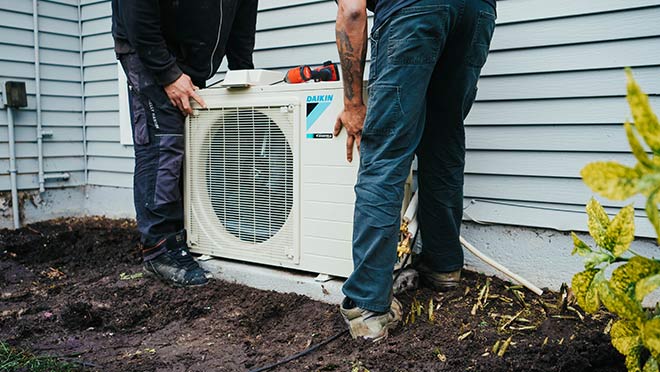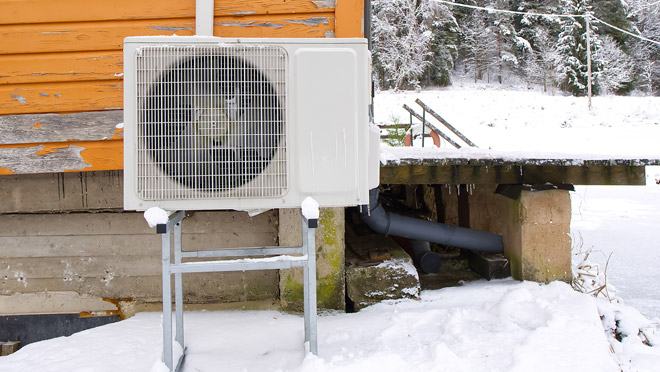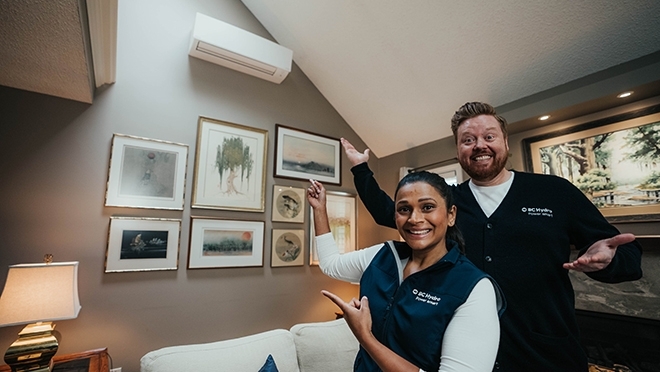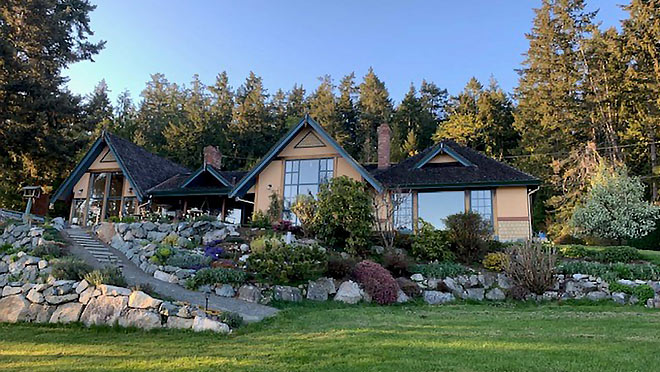Air source heat pumps buyer's guide

Basics help you understand what they're about
Unless you happen to be a trained heat pump installer, you're not going to be able to select, size, and install an air source heat pump without hiring an experienced contractor. And if you want to take advantage of rebates for air source heat pumps, you'll be required to use a Home Performance Contractor Network (HPCN) member.
But it helps to know how heat pumps work, plus a little technical information, as you enter the brave new world of year-round comfort heat pumps can provide. If you haven’t already, check out our heat pump page to learn all the basics, including videos on how heat pumps work and what to consider before installing one.
- HSPF and SEER: What's right for your climate
- COP: A measure of efficiency
- Heat pump sizing considerations
- When to consider supplementary heat
- What to know about sound rating
Selecting the right HSPF and SEER for your region
You're going to need to understand Heating Seasonal Performance Factor (HSPF) to get a heat pump suited to the climate in your region of B.C. The HSPF is a ratio of how much energy the heat pump provides over the full heating season, measured in British Thermal Units (Btu), to the total energy in kWh (kilowatt-hours) it uses over the same period.
The higher the HSPF, the more efficient the heat pump. Often model with a high HSPF rating will have a higher purchase price, but there's a payoff in efficiency and lower operating costs. The priority is to get the right HSPF for your region.
And that's a tad tricky, because the HSPF provided by most manufacturers is often based on Zone 4, the Midwestern U.S.. While that's a match for southwest B.C. and southern Vancouver Island, it doesn't reflect performance in colder regions of B.C. Find your zone on this CleanBC climate zones map, and if you're not in Zone 4, get your retailer/installer to do an HSPF conversion to match your zone.
On the cooling side of the equation, the rating to look at is Seasonal Energy Efficiency Ratio (SEER). It measures cooling efficiency over the entire cooling season, via measure of cooling (in Btu) divided by kWh. The SEER is based on a climate with an average summer temperature of 28°C.
What does that mean for you? See our heat pump rebates page to see the ratings that qualify for BC Hydro rebates.
And use our heat pump cost calculator to see how opting for a higher-efficiency heat pump can save you money on your heating costs.
COP: A measure of heat pump efficiency
One of the big reasons for the increasing popularity of heat pumps is that they're more efficient – usually far more efficient – than fossil fuel systems or baseboard electric heaters. That efficiency rating is Coefficient of Performance (COP), the ratio that indicates how many units of heating or cooling the pump can deliver for each unit of energy required to power it.
For example, if a heat pump has a COP of 5, the pump can produce five units of heat for every watt of power used. The right heat pump is likely able to deliver three units of heat for every unit of energy required (a COP of 3 or greater) over the course of the year. That's three times the COP of a baseboard electric heater, and more than three times the efficiency of even the most efficient natural gas furnaces.
In terms of energy savings, look for a heat pump with a high COP. And ask your contractor whether the selected heat pump delivers at full capacity at temperatures you can expect in your region. Some heat pumps that can deliver a COP of 5 or higher at modest outdoor temperatures may only be capable of producing a COP between 2 and 2.5 in extremely cold weather. In some cases, backup heating will be required for those coldest periods.
It's always a good idea to check with your Home Performance Contractor Network (HPCN) qualified heat pump contractor to ensure you're getting the best heat pump for your home.
Heat pump sizing considerations
Installing a pump with a capacity that's too big for your home may provide less comfort as it cycles on and off frequently, and could result in higher operating costs. But you'll need to get one that's powerful enough to provide year-round comfort, and according to what you're using it for.
This is where your heat pump professional comes in. They'll do the calculations based on:
- The climate in your region
- Your home's heating and cooling needs
- The objectives of your installation (maximizing heating savings, displacing an existing system for just certain periods of the year, etc.)
- Whether you have a backup heating source
With an undersized heating system, you'll be leaning on a backup (or supplemental) heating source more often, and that could reduce your energy savings.
One big thing to consider before sizing a heat pump is the state of your building envelope. If you can take advantage of insulation rebates to upgrade your home in advance of a heat pump installation, you may be able to go with a smaller, less expensive, heat pump.
When to consider supplementary heat
Depending on the model you choose, an air-source heat pump can operate in temperatures as low as -30°C. However, if you live in areas that frequently get below -15 degrees Celsius, your contractor may recommend a supplementary heating system. While they're less efficient than your heat pump, they'll operate independent of outdoor temperature.
What to know about sound rating
There used to be a lot of complaints about noisy heat pumps, but today's heat pumps are generally much quieter and more efficient than in the heat pump's early days. It pays to shop around, however, as some of today's cheaper models can still be a bit noisy.
Look for a low decibel (dB) rating and invest in a reputable brand that you can rely on for the next 10-15 years. On average, most modern heat pump outdoor units have a sound rating around 60 decibels, equivalent to a moderate rainfall or normal conversation. Some ultra-quiet models attain lower sound level ratings.
And location matters. Work with your contractor to place the outdoor unit away from windows (especially bedroom windows) and adjacent buildings.


